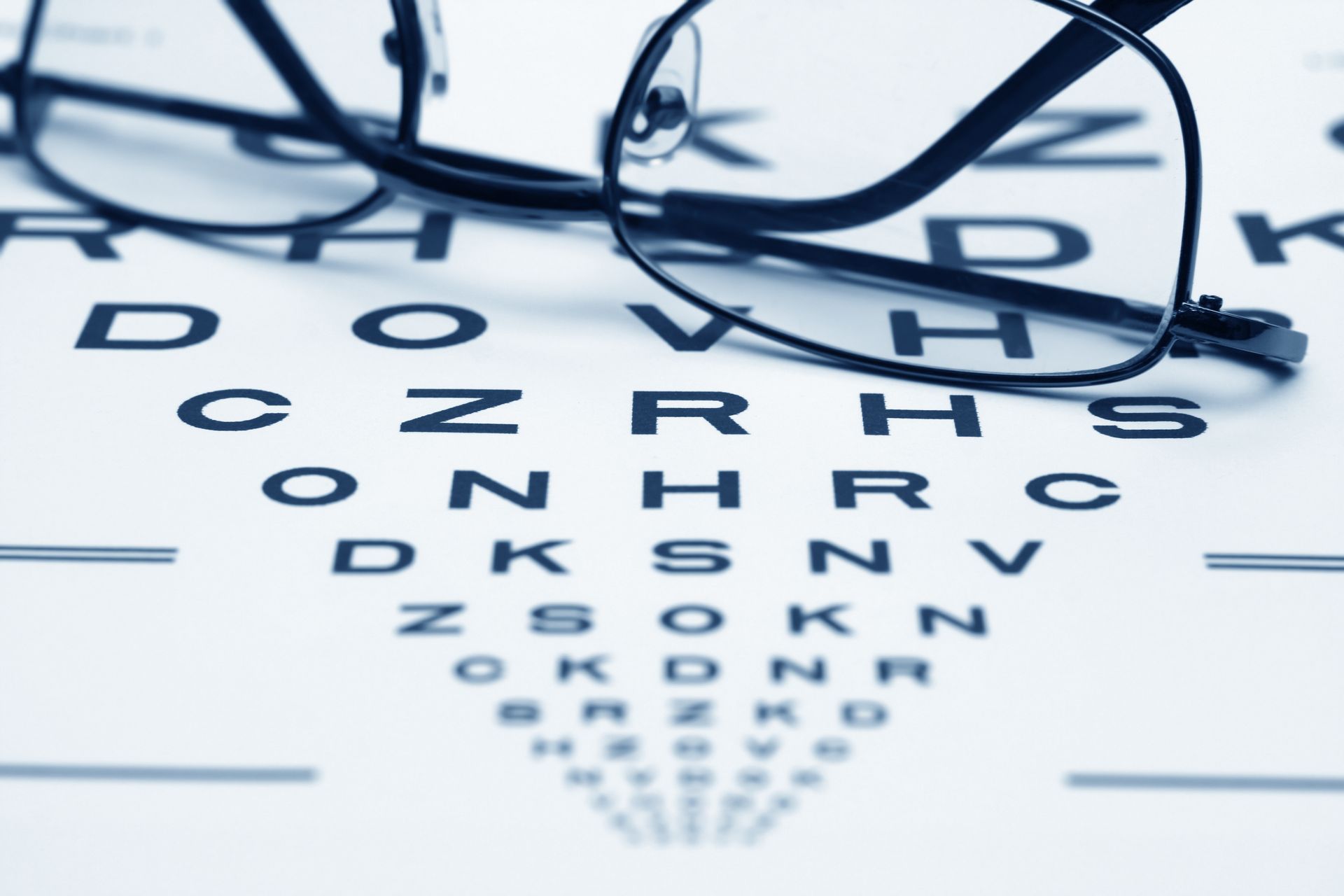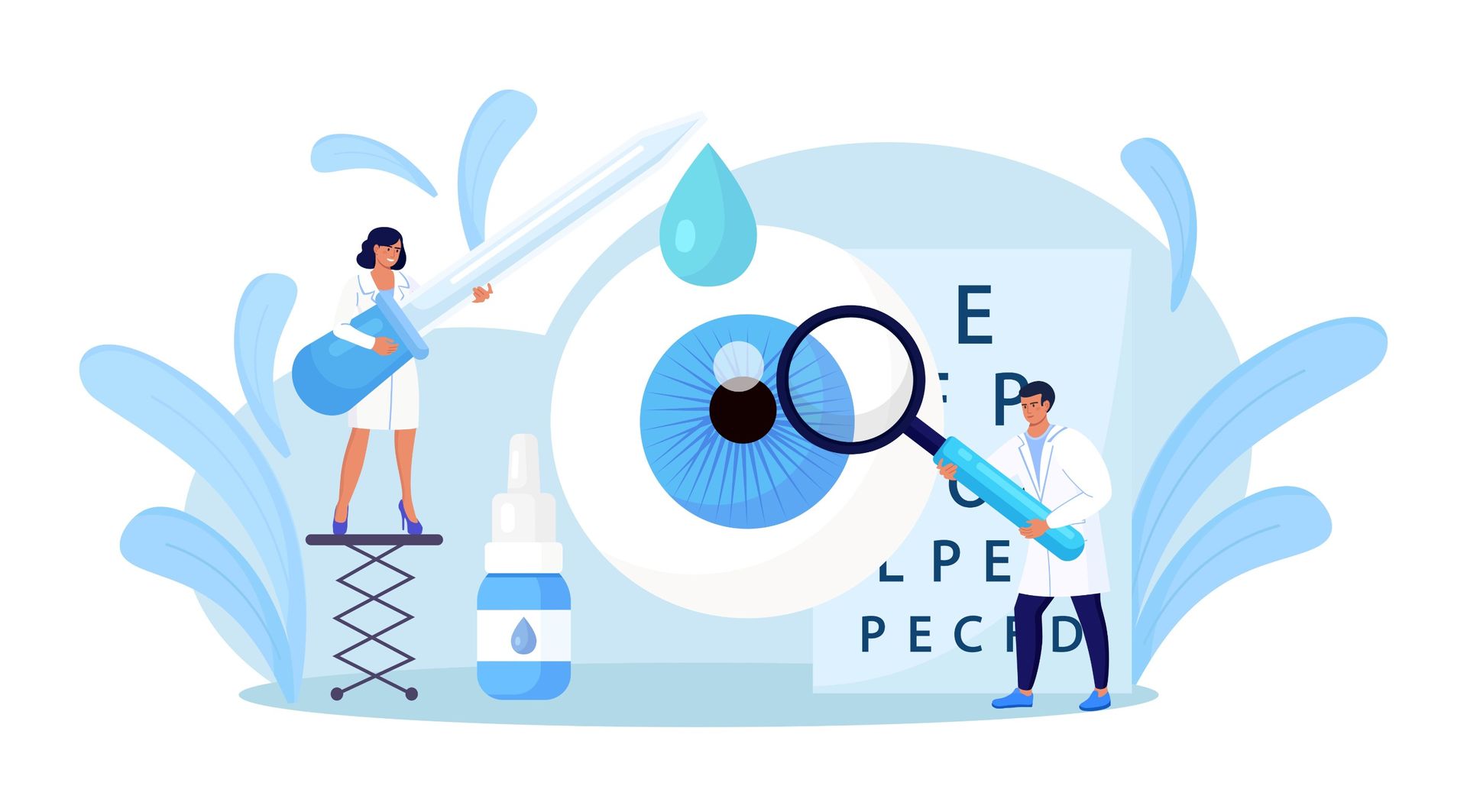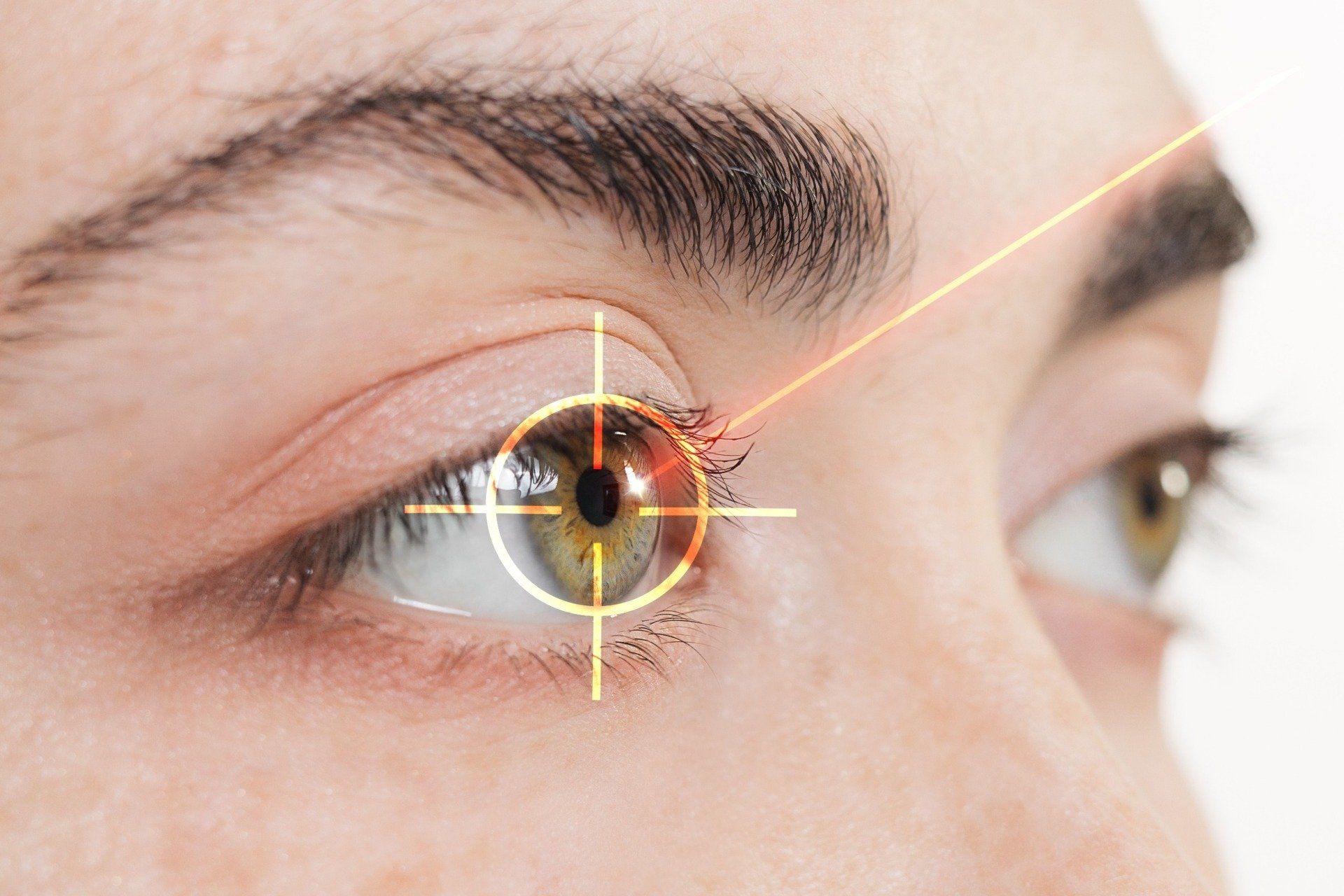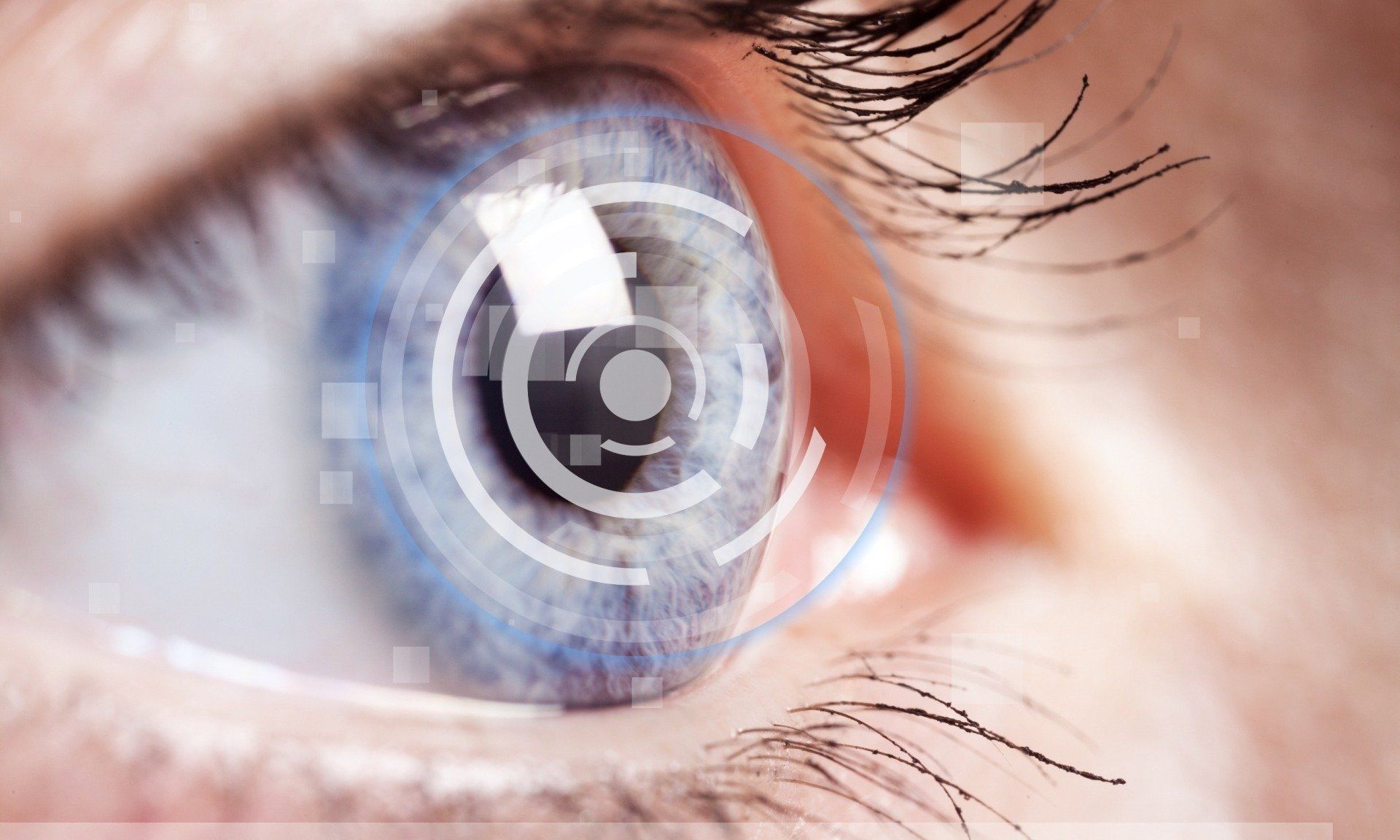What is Corneal Crosslinking?
The cornea is the front surface of the eye – the outermost lens. You can think of it as your eye’s personal windshield, not only protecting the inside structures of the eye from the outdoor elements, but contributing to your ability to see clearly by allowing light to pass through the lens and into the back of the eye.
And while it’s the lens that gets most of the credit, the cornea is responsible for roughly 60-65% of the eye’s total focusing power. That’s why maintaining the health and function of the cornea is so important to preserving your vision long-term – any damage to a healthy cornea can result in vision loss or impairment.
Progressive keratoconus is an eye condition that occurs when the cornea – which is normally dome-shaped – thins, weakens, and bulges out. What remains is a cone-shape cornea that doesn’t allow light to focus into the lens and retina (back of the eye) properly. As you can imagine, this causes blurred and/or distorted vision.
What is Corneal Collagen Crosslinking?
Corneal cross-linking, also known as corneal collagen cross-linking or CXL, is a minimally-invasive surgery that helps prevent the progression of keratoconus. During the procedure, corneal tissue is strengthened with the formation of covalent bonds between collagen fibers in the eye. This stabilizes corneal shape.
Many people will turn to glasses or contact lenses when correcting vision impairment, but this won’t do anything to treat the abnormally-shaped cornea and time will only make it worse. With CXL, the cornea is locked in its current shape – which won’t necessarily improve vision, but will stop it from getting worse.
The surgery was approved by the FDA in 2016, giving keratoconus patients – and others suffering from thinning or distortion of the cornea – a new treatment option. Over the past 6+ years, modern technology and new techniques allow for a success rate well over 90%, making it both a safe and effective option.
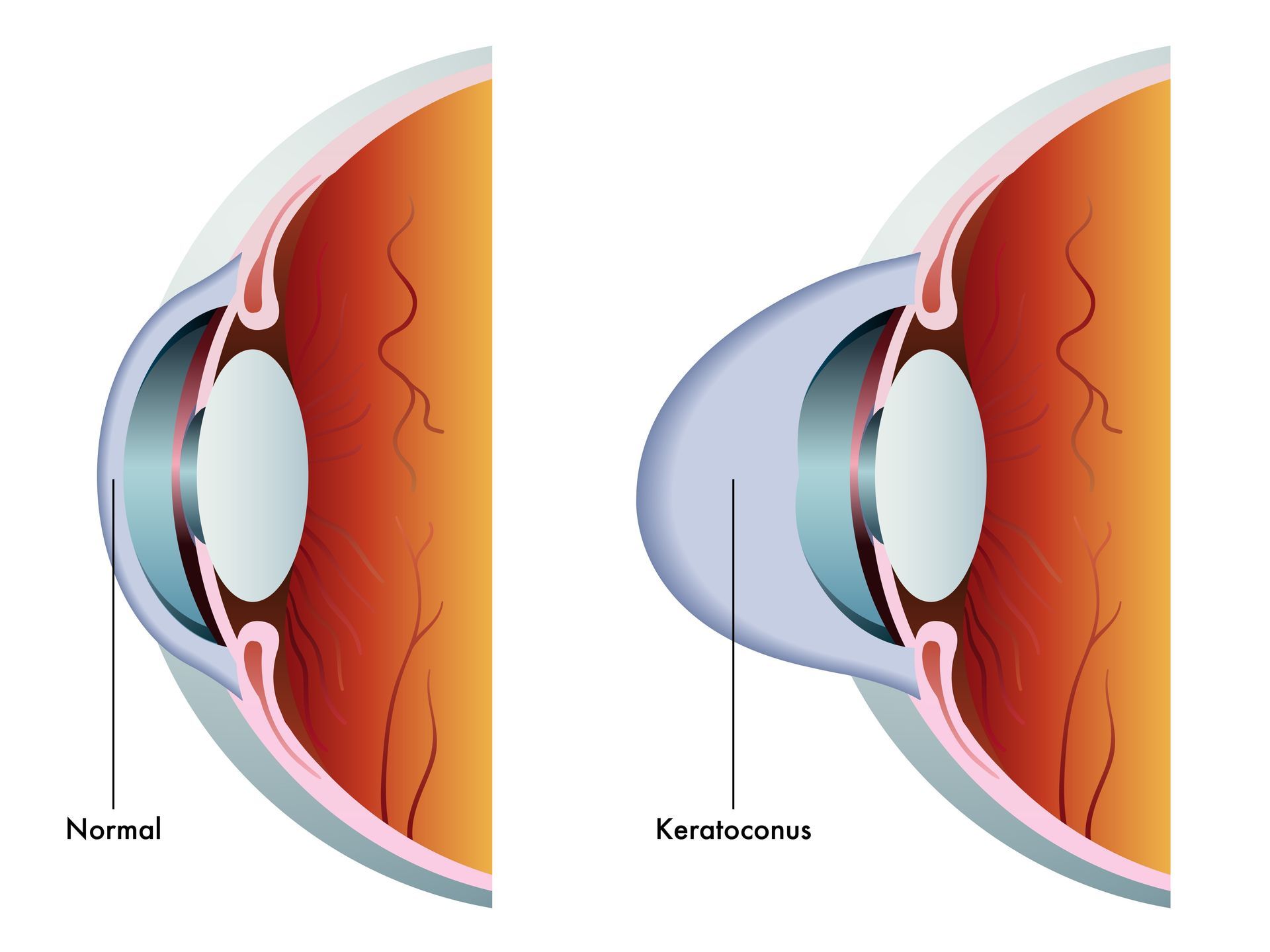
When is Corneal Cross-linking (CXL) Necessary?
Keratoconus is a progressive disease, meaning it worsens over time if not treated properly – which generally requires CXL or corneal transplant. With that being said, corneal cross-linking is necessary when trying to prevent the progression of the disease and preserve the patient’s vision moving forward.
Of course, there are a variety of other applications for CXL and one of the most common is primary or post refractive surgery corneal ectasia – any existing corneal bulging after refractive surgery. Other conditions CXL can treat include corneal ulcers, infectious keratitis, pellucid marginal degeneration, and more.
In regards to keratoconus, the corneal cross-linking procedure can be approved for patients of any age – so long as they meet the criteria. What’s most important is ensuring the disease is diagnosed as early as possible to prevent any progression in the first place. That’s why annual checkups with your eye doctor are vital.
What to Expect During the CXL Procedure
CXL is an outpatient procedure that’s performed inside the eye doctor’s office. The surgery takes anywhere from 1-3 hours and patients are sent home that same day (after a brief recovery period). Anesthesia isn’t necessary, unless it’s a younger child, and only one eye is operated on at a time.
The procedure involves the use of Vitamin B2 (riboflavin) and ultraviolet (UV) light – here’s a quick breakdown of what to expect from the surgery:
- If the patient is younger, anesthesia may be used prior to starting the procedure
- The doctor places a ring on the cornea to isolate the treatment area
- Alcohol eye drops are applied to loosen the outermost layer of the cornea (corneal epithelium)
- The epithelium is then wiped away, exposing the next layer of the cornea (stroma), where collagen is found
- Vitamin B eye drops are applied for 30-45 minutes until it soaks all the way through the stroma
- Once the desired corneal thickness is reached, an ultraviolet light is shined onto the cornea to induce a chemical reaction between the light and vitamins
- The reaction helps strengthen the bonds in the stroma, resulting in a more rigid cornea
- Numbing eye drops are applied and a contact lens is place on the eye for protection while it heals
Patients shouldn’t expect to feel any pain during the procedure, but might experience small levels of discomfort. As with any type of eye surgery, patients are advised to notify their doctors or surgeons if they experience anything out of the norm (pain, discomfort), that way it can be monitored moving forward.

Recovering From Corneal Cross-linking
After the surgery, patients are given a set of aftercare instructions to be followed carefully in the coming days and weeks. It’s normal for patients to experience blurred or distorted vision, minor discomfort, small levels of pain, light sensitivity, and/or dry eyes as the healing process begins – which usually lasts 1-2 weeks.
During the recovery period, there are a few things patients should avoid – including:
- Touching or rubbing the eye
- Getting water in or around the eye
- Using eye makeup or eye liner
- Doing any type of heavy or strenuous exercise
- Environments with a lot of smoke or dust
Your doctor might also give you an eye shield to wear for the first few days after surgery, as well as eye drops to help lubricate the eye, reduce blurred vision, and relieve some of the pain. You’ll have several follow-up appointments with your eye doctor to monitor the results of the surgery and ensure the right steps are being taken.
Corneal Cross-linking FAQs
Keratoconus is an eye disease that affects anywhere from 1 in 500 to 1 in 2,000 people – it’s not one of the most common eye diseases, but there are thousands of people struggling with it every day. With that said, we understand that patients are going to have a lot of questions about the disease and its treatment.
Hopefully we can answer some of those questions below:
- Are patients awake during the procedure? Older patients are almost always awake during the procedure, but some children might be put to sleep.
- Does the corneal crosslinking procedure hurt? Patients usually won’t report any pain, but some discomfort is normal.
- Is corneal crosslinking a permanent procedure? Most patients will see their corneal shape locked in place for at least seven years, with some patients needing a second procedure.
- How much does corneal crosslinking cost? This varies for each individual, but most patients can expect to pay between $2,000 and $4,000 per eye.
- Is CXL covered by insurance? This is often determined on a case-by-case basis, but it usually comes down to whether or not it impacts the individual’s health negatively.
At Holly Springs Eye & Laser, we take great pride in offering best-in-class eyecare services to the Holly Springs and greater area. If you would like to learn more about keratoconus, corneal cross-linking, or any other eye disease, feel free to call or text us at 919-689-8920 or email us at hello@hollyspringseyeandlaser.com to schedule an appointment.





